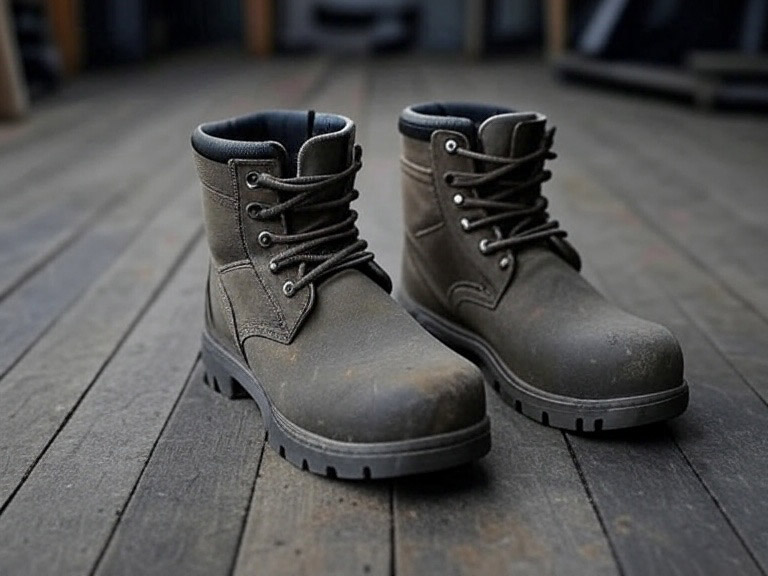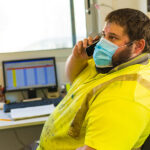For millions of workers who spend their days on their feet—from retail associates and factory workers to healthcare professionals and food service employees—proper footwear represents far more than a fashion choice. The shoes worn during extended standing periods directly impact worker health, safety, and productivity in ways that many organizations and employees don’t fully appreciate. Poor footwear choices can lead to immediate discomfort, long-term health problems, and increased workplace injury risks that affect both individual workers and business operations.
The human body isn’t naturally designed for prolonged standing on hard surfaces. When workers spend eight or more hours daily standing on concrete floors or other unforgiving surfaces, their feet, legs, and back experience stress that can accumulate into serious health problems. Quality footwear serves as the critical interface between the worker and the ground, providing essential protection and support that can mean the difference between a sustainable career and chronic pain problems.
Understanding the Physical Impact of Prolonged Standing
Standing for extended periods creates multiple physiological challenges that proper footwear can help address. Blood tends to pool in the lower extremities when standing, leading to swelling, fatigue, and discomfort that worsens throughout the workday. The feet bear the entire body weight while providing stability and balance, creating pressure points that can develop into painful conditions without adequate support.
The repetitive stress of standing affects more than just the feet. Poor foot positioning and inadequate support force compensatory changes throughout the kinetic chain, leading to ankle, knee, hip, and back problems. Workers may develop plantar fasciitis, heel spurs, varicose veins, and chronic lower back pain—conditions that can persist long after the workday ends and potentially require expensive medical treatment.
Foot fatigue also affects cognitive performance and reaction times. Workers experiencing foot pain and discomfort may become distracted, less alert, and more prone to accidents. This creates safety risks not just for the affected worker but for colleagues and customers in the surrounding area.
Essential Features of Workplace Footwear
Quality work shoes for standing positions must incorporate several critical features that address the unique demands of prolonged standing. Arch support ranks among the most important characteristics, as it helps maintain proper foot alignment and reduces stress on the plantar fascia and other foot structures. Shoes lacking adequate arch support force the foot muscles to work overtime, leading to rapid fatigue and increased injury risk.
Cushioning throughout the sole, particularly in the heel and forefoot areas, helps absorb the impact forces generated during standing and walking. This cushioning should be substantial enough to provide meaningful shock absorption while remaining stable enough to prevent ankle rolling or instability. Memory foam, gel inserts, and specialized foam compounds can provide effective cushioning when properly designed.
The heel counter—the back portion of the shoe that surrounds the heel—must provide firm support to maintain proper foot positioning. A quality heel counter prevents excessive foot movement within the shoe while providing stability during weight shifts and movement. Shoes with inadequate heel support allow the foot to slide and move excessively, creating friction and instability.
Proper fit represents another fundamental requirement that many workers overlook. Shoes that are too tight create pressure points and restrict circulation, while shoes that are too loose allow excessive foot movement that can lead to blisters and instability. Feet typically swell throughout the day, so shoes should accommodate this natural expansion while maintaining proper support.
Workplace-Specific Considerations
Different standing job environments create unique footwear requirements that must be considered when selecting appropriate shoes. Healthcare workers require shoes that can be easily cleaned and sanitized, often with non-porous materials that resist bacterial growth. Slip resistance becomes critical in environments where floors may be wet or contaminated with bodily fluids.
Manufacturing and warehouse workers need shoes that provide protection from falling objects, sharp materials, and electrical hazards. Steel or composite toe caps, puncture-resistant soles, and electrical hazard protection may be required depending on the specific workplace hazards present. These safety features must be integrated with comfort and support features rather than replacing them.
Food service workers face unique challenges including exposure to hot liquids, grease, and frequent cleaning chemicals. Their footwear must provide excellent slip resistance on wet and greasy surfaces while maintaining comfort during long shifts spent moving quickly in confined spaces.
Retail workers often face the challenge of maintaining professional appearance while prioritizing comfort and support. Modern athletic-inspired work shoes can provide necessary support and cushioning while meeting dress code requirements in most retail environments.
The Business Case for Quality Footwear
Employers have compelling reasons to invest in proper footwear for standing position workers. Workers experiencing foot pain and discomfort are less productive, take more breaks, and may require more sick time for related health problems. The cost of providing quality footwear or footwear allowances is typically far less than the productivity losses and workers’ compensation claims that can result from foot and leg problems.
Quality footwear can also reduce workplace accidents related to slips, trips, and falls. Shoes with appropriate tread patterns and sole compounds provide better traction on various surfaces, while proper fit and support help maintain balance and stability during normal work activities.
Employee retention improves when workers feel that their employer cares about their comfort and health. Providing footwear allowances or requiring specific safety footwear standards demonstrates organizational commitment to worker welfare that can improve morale and reduce turnover.
Making Informed Footwear Choices
Workers and employers should approach footwear selection systematically rather than relying on price or appearance alone. This includes understanding the specific demands of the work environment, identifying required safety features, and prioritizing comfort and support characteristics that address the challenges of prolonged standing.
Professional fitting services can help ensure proper shoe selection and sizing, particularly for workers who have developed foot problems or have specific medical considerations. Many specialty work shoe retailers offer expertise in matching footwear to specific occupational demands.
The investment in quality footwear pays dividends in worker health, safety, and productivity. For jobs requiring extended standing, proper footwear isn’t a luxury—it’s an essential tool that enables workers to perform their duties safely and comfortably while protecting their long-term health and career sustainability.


